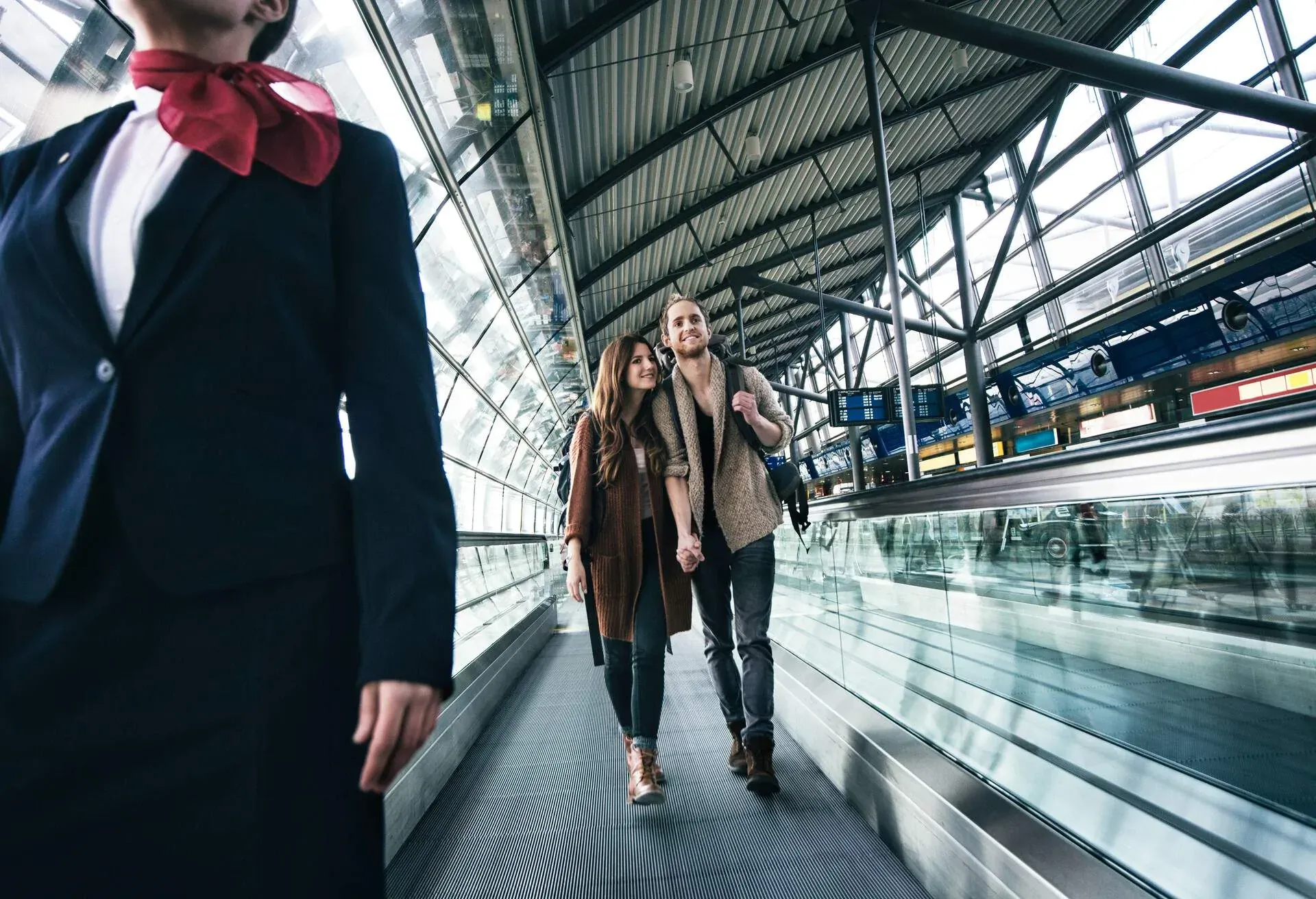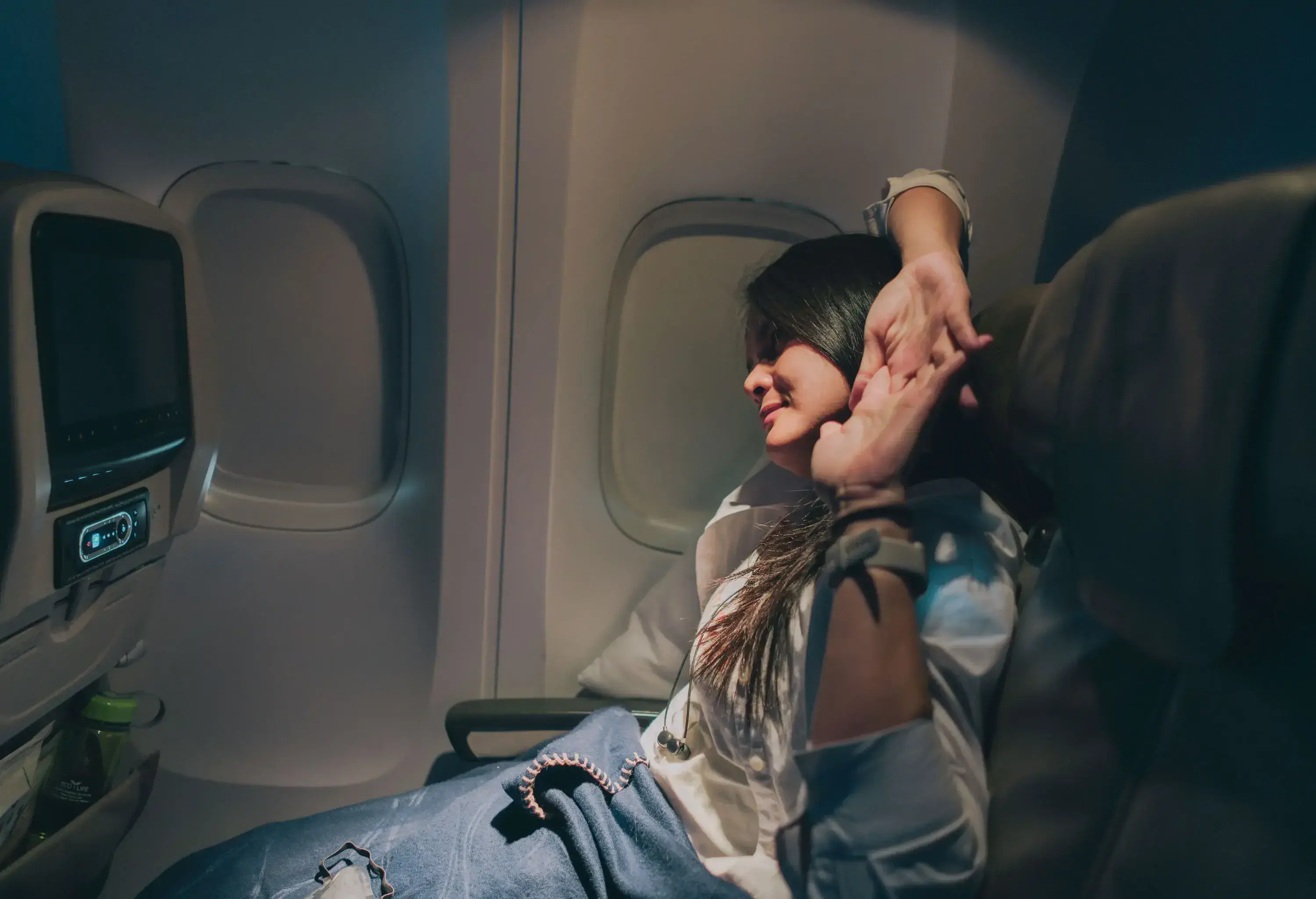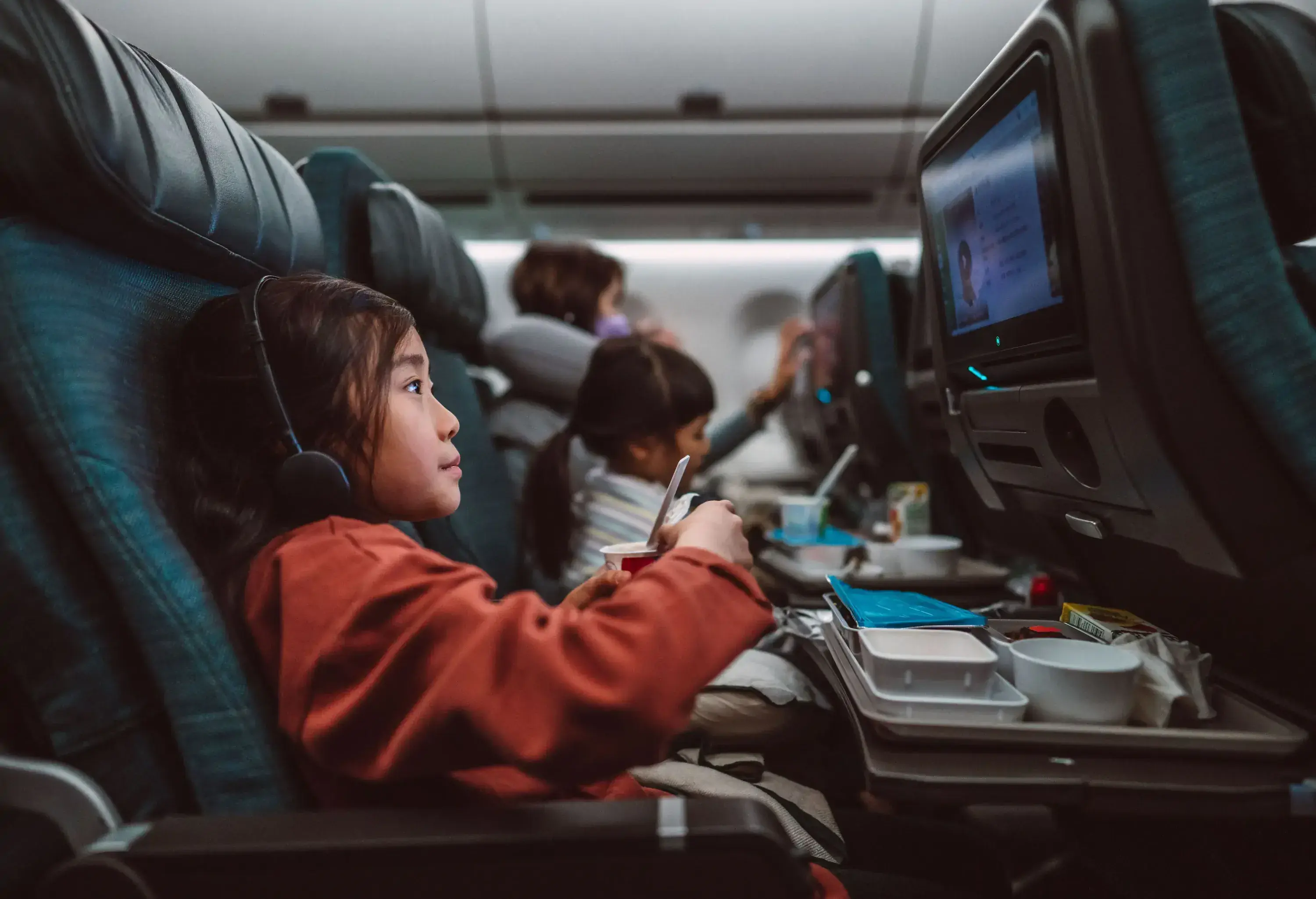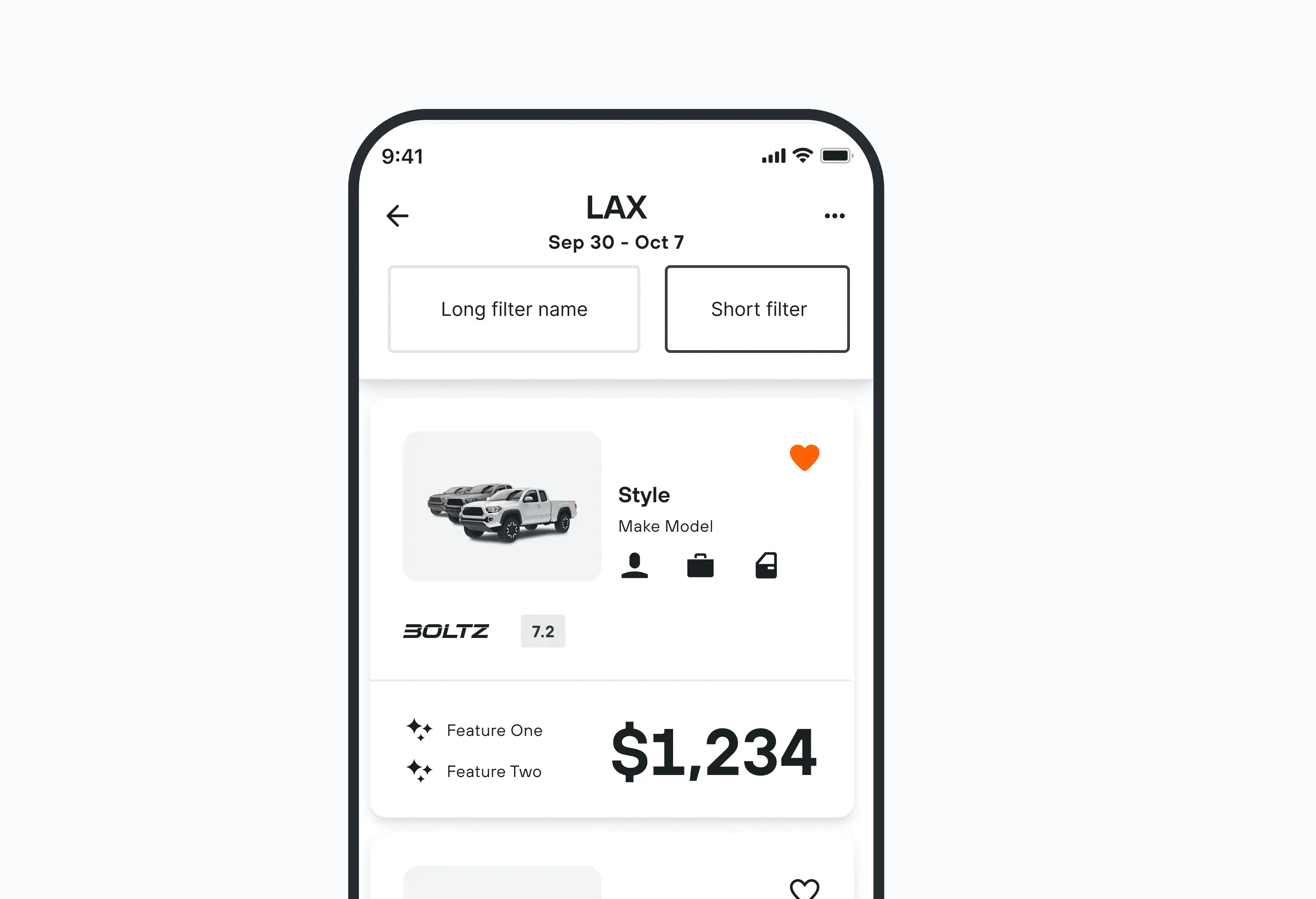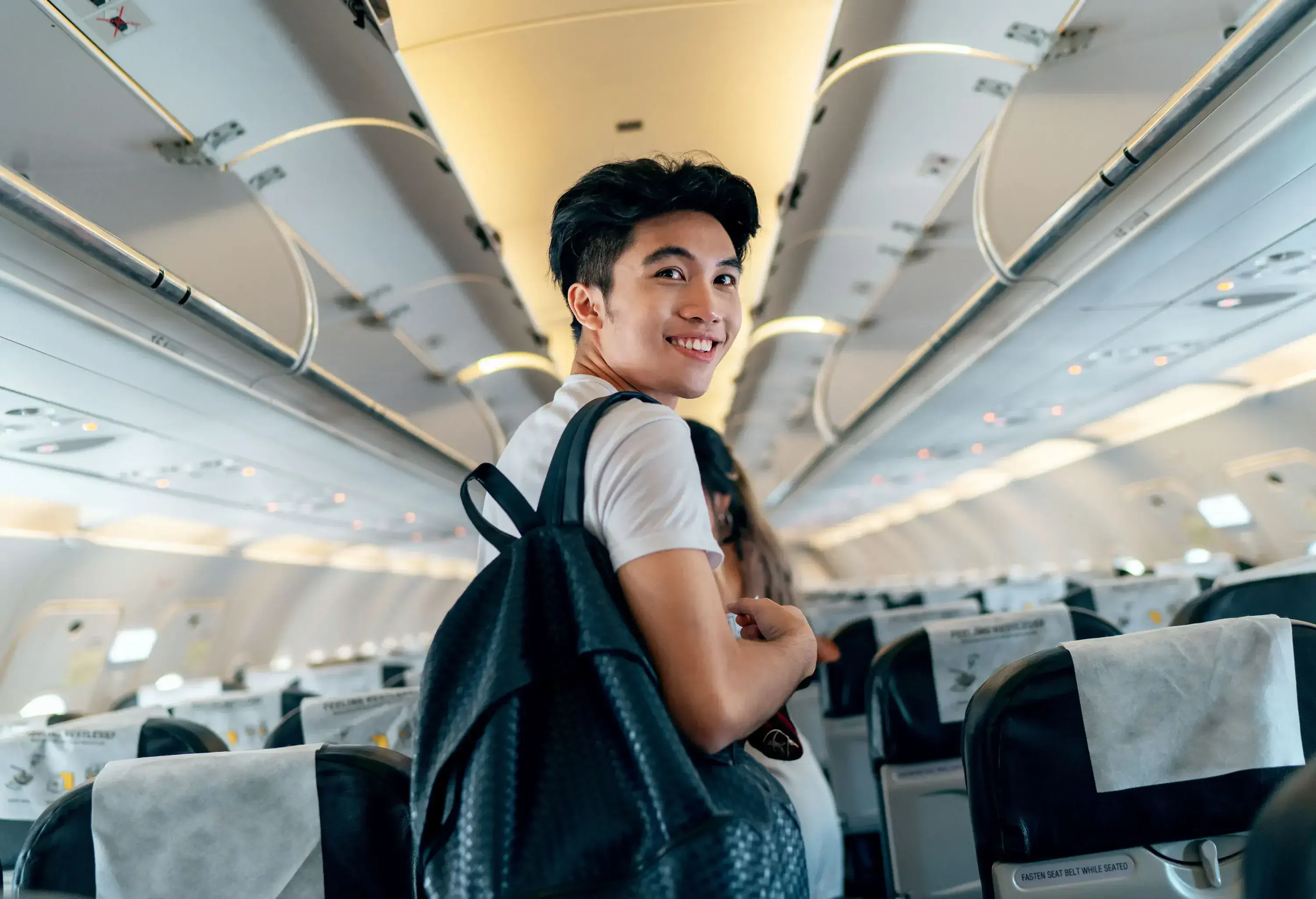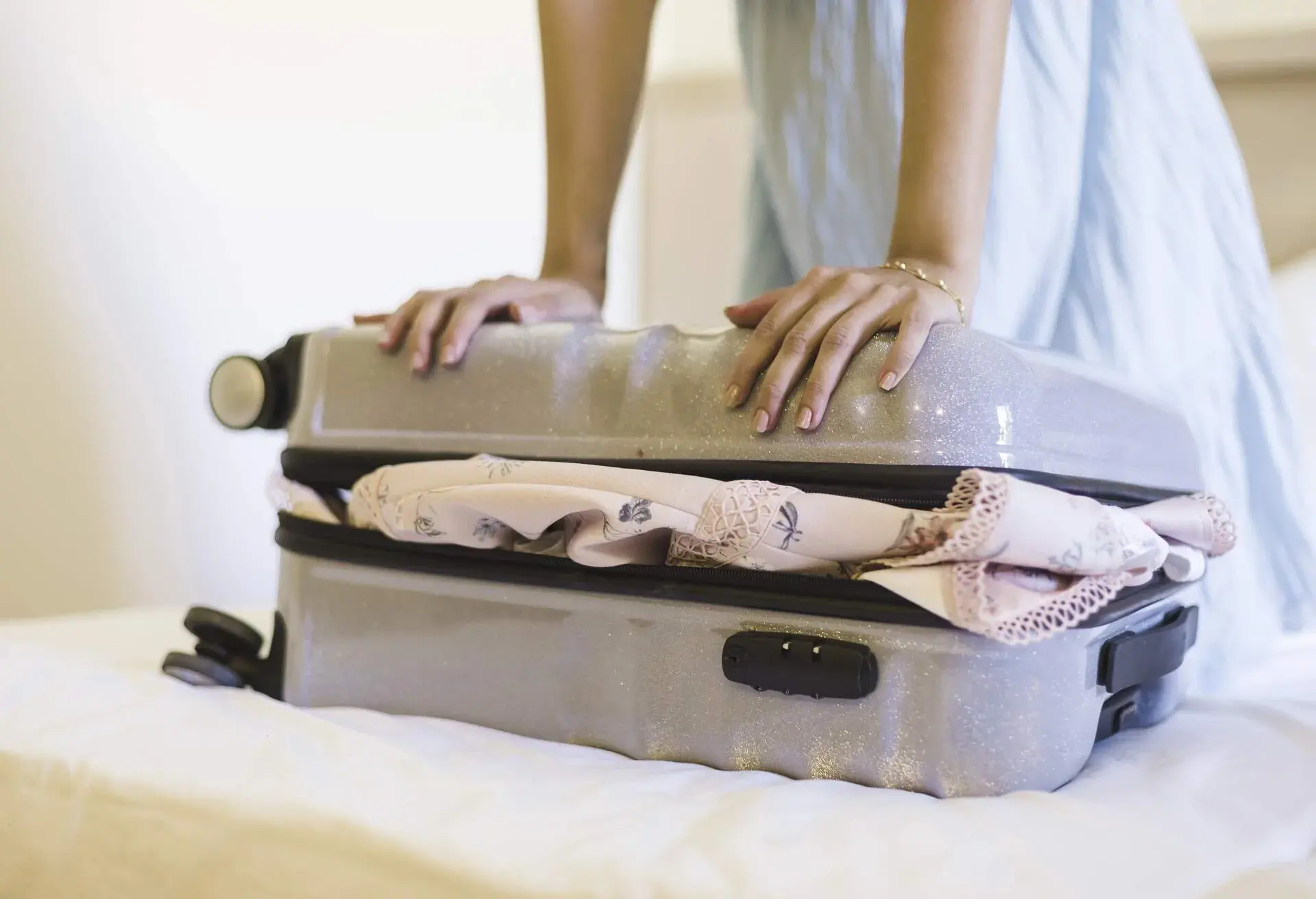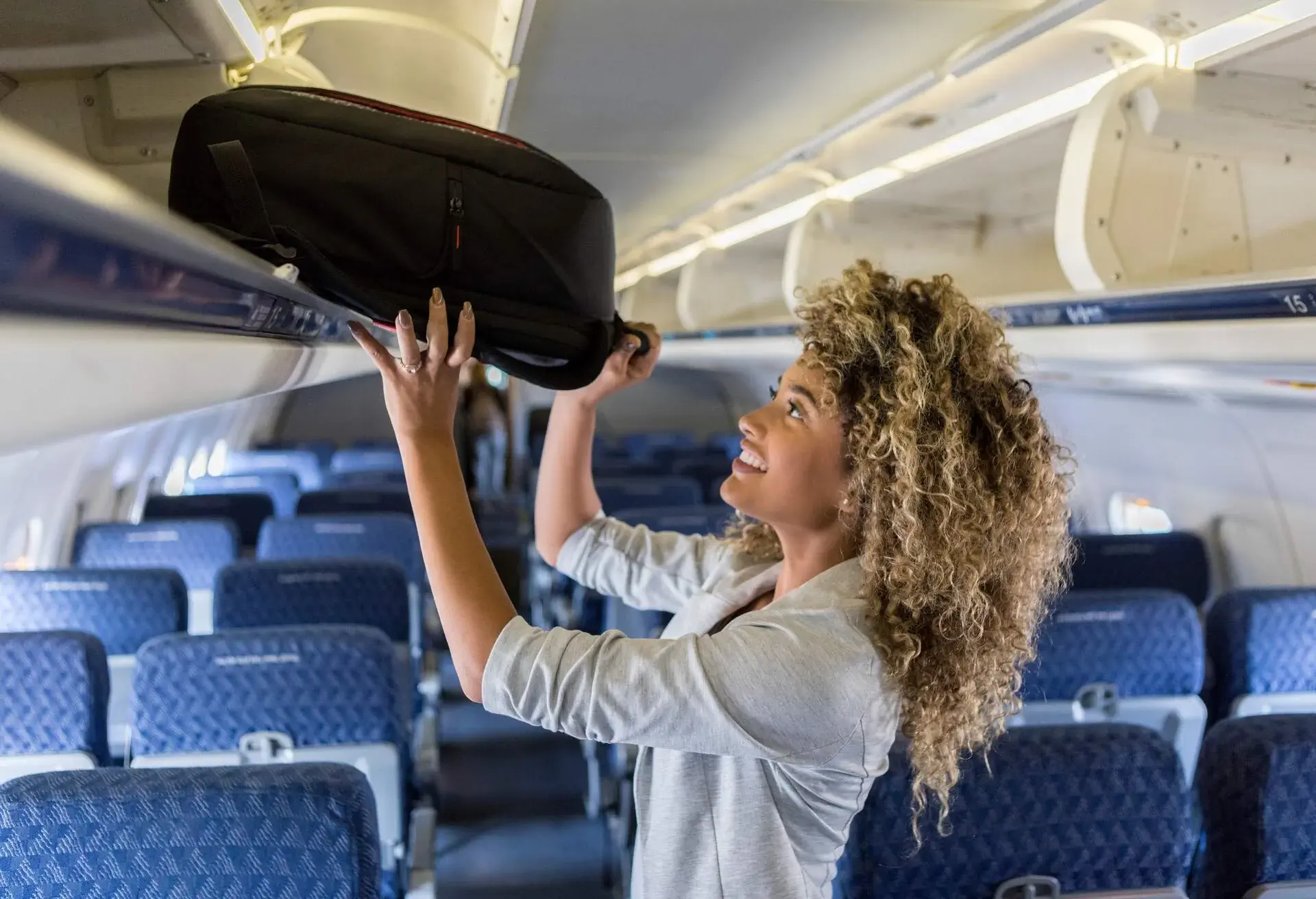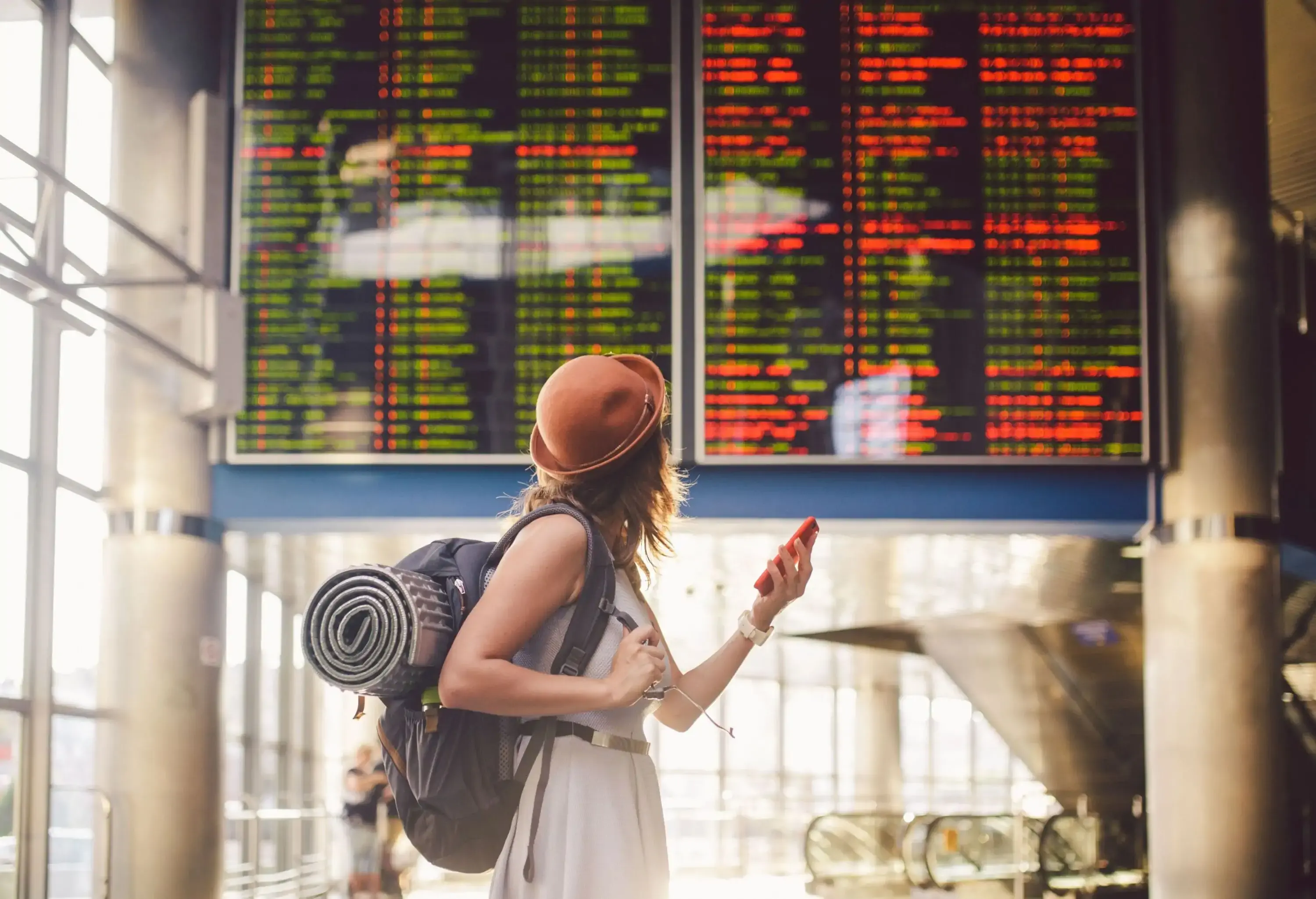In this guide, I’m sharing my best tips for surviving long flights so you can actually enjoy the journey. Whether you’re flying economy on a red-eye or tackling a 16-hour ultra-long-haul, these suggestions will help you stay comfortable and arrive feeling refreshed.
How to survive a long flight: the essentials.
Here’s a quick survival plan to get you through.
- Dress in layers and slip-ons: Stay warm, stay comfy and make security easier.
- Buckle your seatbelt over your blanket so you won’t get woken during turbulence checks.
- Pack light with a capsule wardrobe to avoid lost luggage and minimize hassle.
- Bring snacks and hydrate hourly: Avoid salt, sip water (about 300 ml per hour) and skip alcohol.
- Choose the right seat for comfort: Exit row or bulkhead for tall travelers; mid-wing window for sleep.
- Time your naps: Sleep in sync with your destination’s time zone to minimize jet lag.
- Use noise-canceling headphones (or earplugs)
- Move every 90 minutes: Walk the aisle, stretch ankles or wear compression socks.
- Charge and download: Bring a power bank, pre-download movies or podcasts and dim your screen.
- Use KAYAK tools: Filter Wi-Fi flights, set Trips alerts and check Flight Tracker for gate updates.
Whether your goal is to sleep, work or fly smoothly with kids, pick your goal and follow these expert tips for a comfortable flight:
1. Dress in layers and slip-ons.
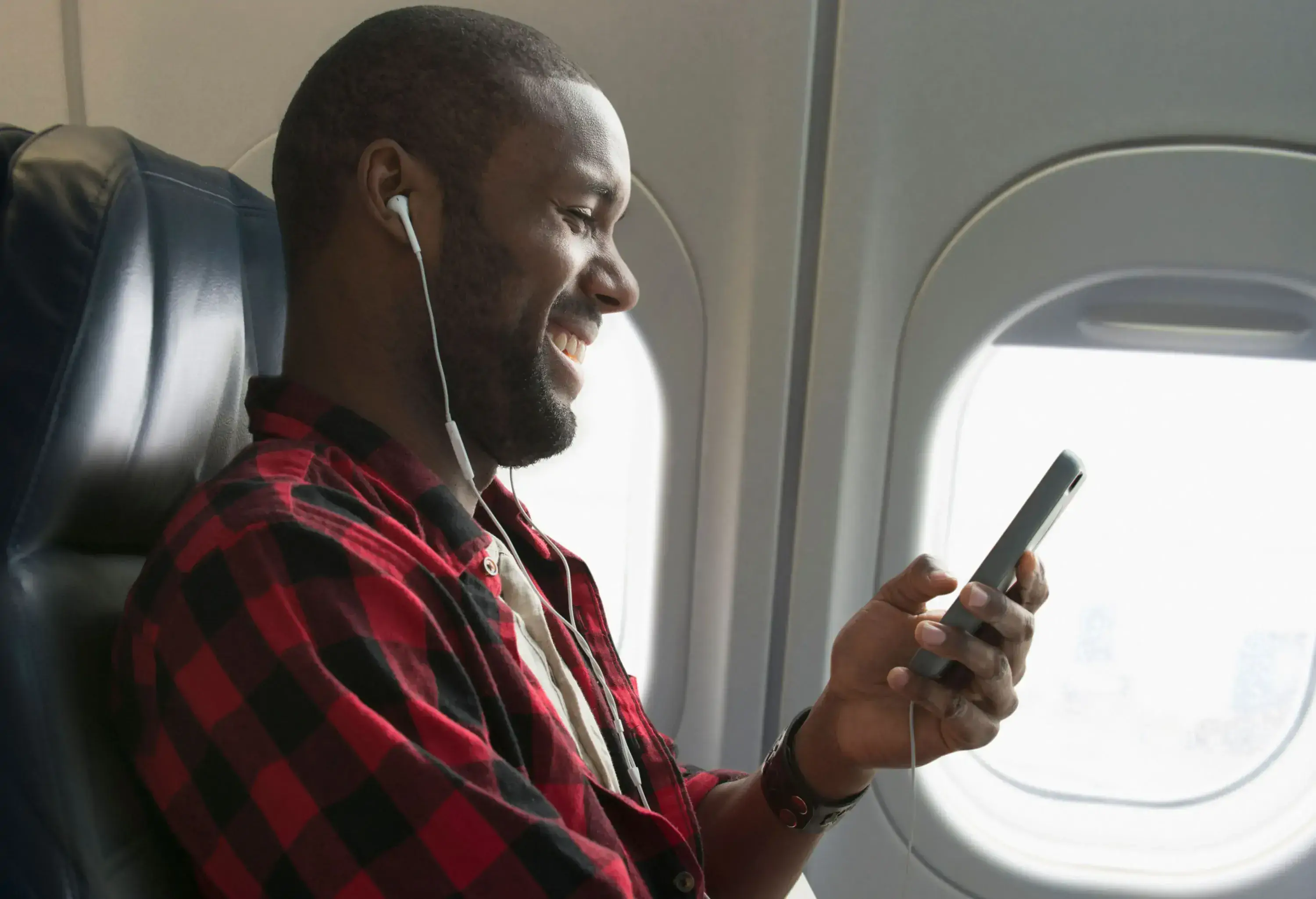
Here are the most essential items for staying comfortable on long haul flights:
- Light layers
- Comfy socks
- Slip-on shoes
- Pillow & blanket
Regardless of the climate at your destination, multiple light layers are your best friends on a long haul flight. I’m always cold on a flight, so I like to wear layers topped with a light down vest that I can crush into nothing if I’m traveling to a warm climate. I roll up the vest and use it as a travel pillow.
Wear slip-on shoes. They’re good for security and ideal for slipping off on the plane in favor of slippers or grippy socks. Compression socks are also a great choice if you’re concerned about circulation or feet swelling at high altitudes.
Many people love to bring a travel pillow, but I don’t like carrying an extra item. (If you must have a pillow but feel the same way, look into one of the many inflatable travel pillows now on the market.) And I always travel with a lightweight but warm alpaca scarf. It makes the perfect blanket on a plane and still looks elegant in the evenings if I need a layer.
2. Buckle your seatbelt over your blanket.
I learned the hard way that zealous flight attendants may wake you up to see if your seatbelt is fastened if they can’t see it.
Just buckle your seatbelt over your blanket (or layers of clothing). If you’re able to sleep through turbulence and the flight attendants come around, they won’t wake you.
3. Pack light with a capsule wardrobe.
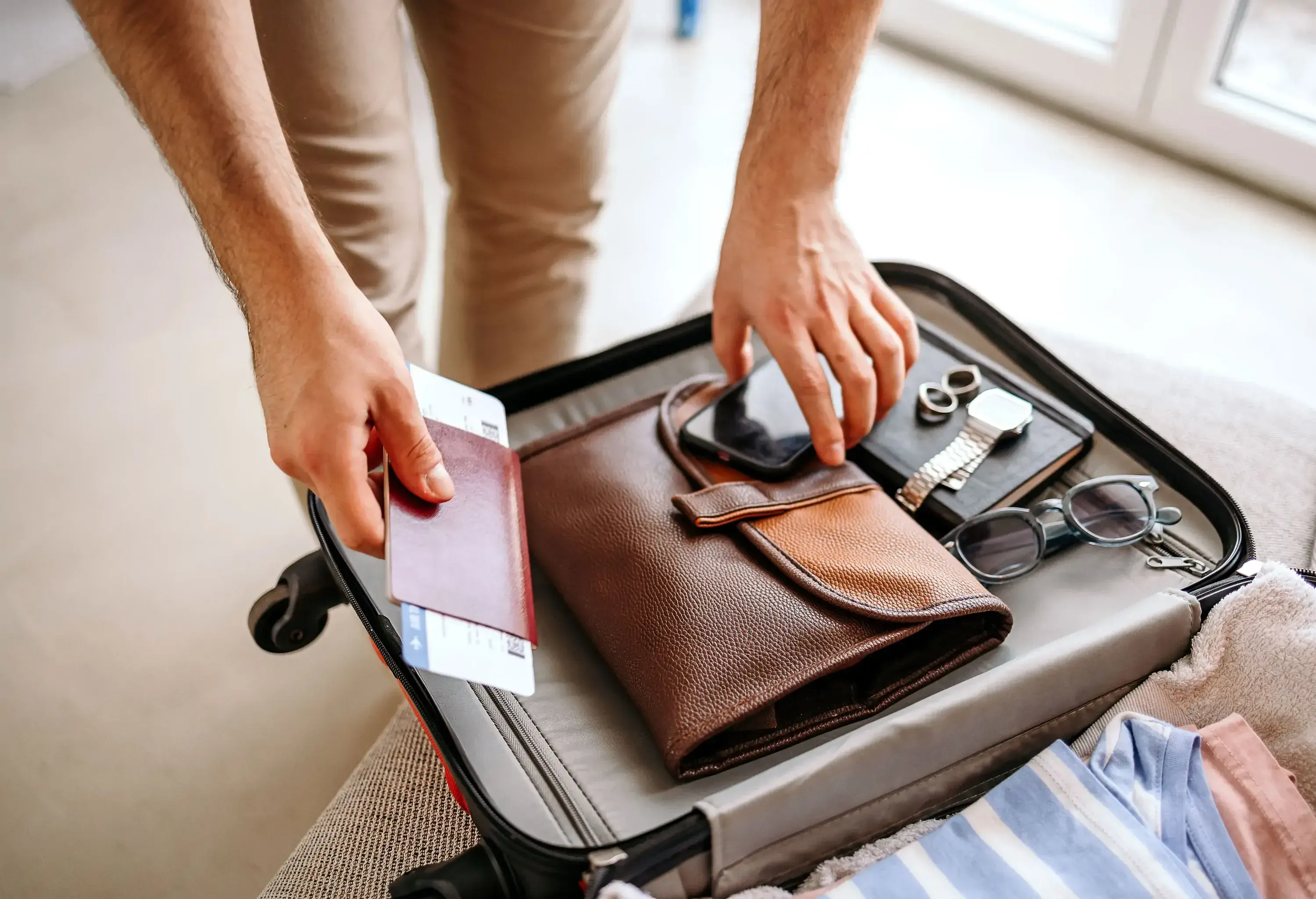
When I was young, my travel-obsessed father had one rule: no checking bags. It’s still the way I travel today, even if I’m going on a trip for a week.
Although this tip won’t necessarily make you more comfortable on your flight, it may save your sanity when you arrive. I create a capsule collection for travel. I choose a single type of neutral color as a wardrobe base. For instance, navy, black, or brown.
I don’t mix the neutrals, but I’ll layer color on top. For example, if the base is black, every additional item of clothing I bring must work well with black. Pack this way, and you’ll be amazed at how few things you need on a trip.
Plus, if you pack light enough to only bring a carry on, you don’t have to worry about lost luggage, which can really throw a wrench in any vacation.
4. Bring snacks and hydrate hourly.
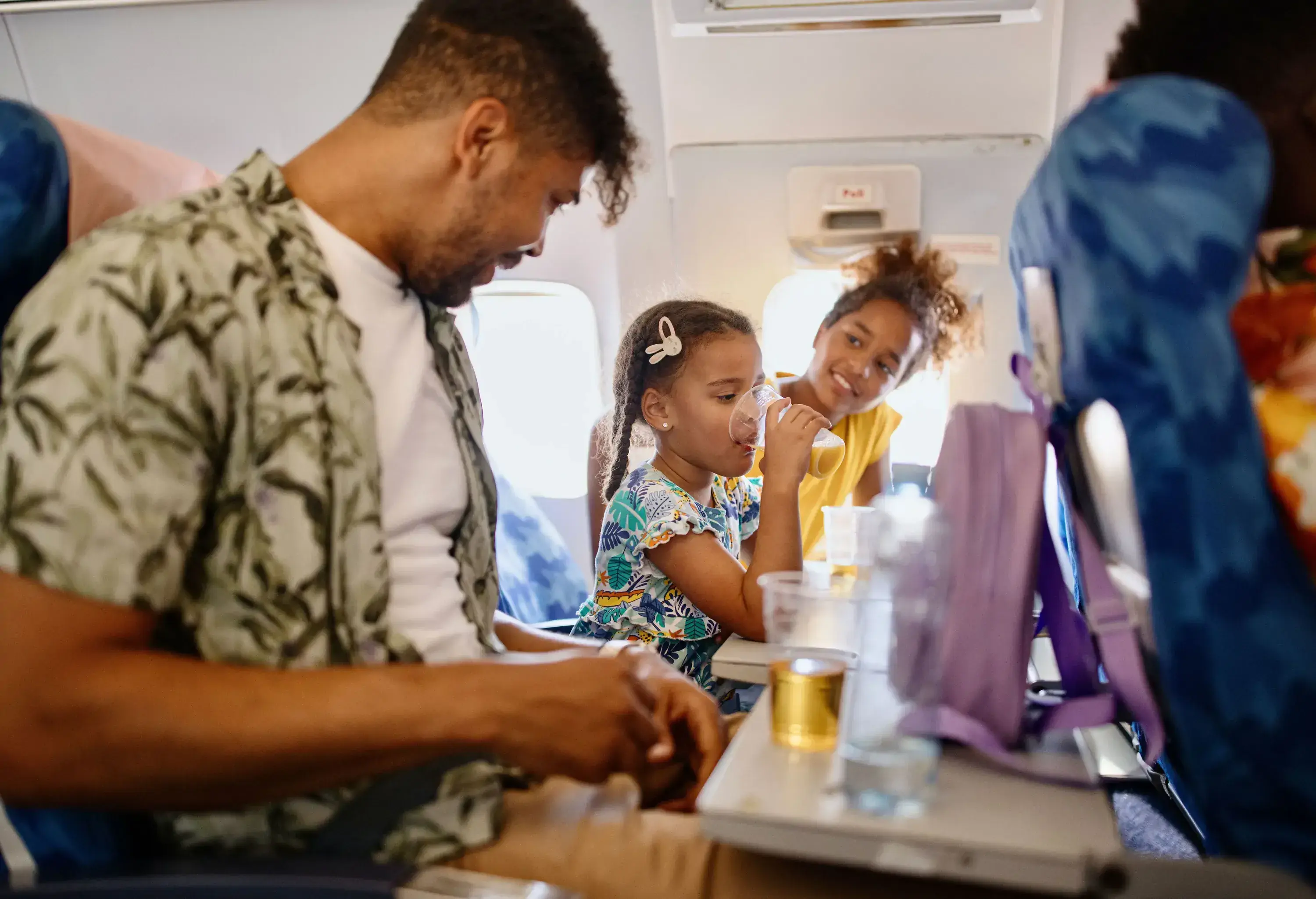
When you’re crossing time zones, your flight attendants are usually syncing the meals with your destination, which means that you may get a meal when you’re not hungry and may be hungry for hours before the next meal arrives.
I usually bring a little something on a flight, like almonds or granola bars, in case the latter happens. (I also travel with someone who tends to get “hangry,” so throwing him some snacks is good for everyone.)
Although I love salty snacks like pretzels and chips, I try to stay away from them on long flights to avoid dehydration and swelling. I also try to make a point of taking some sips of water every hour.
5. Choose the right seat for comfort.
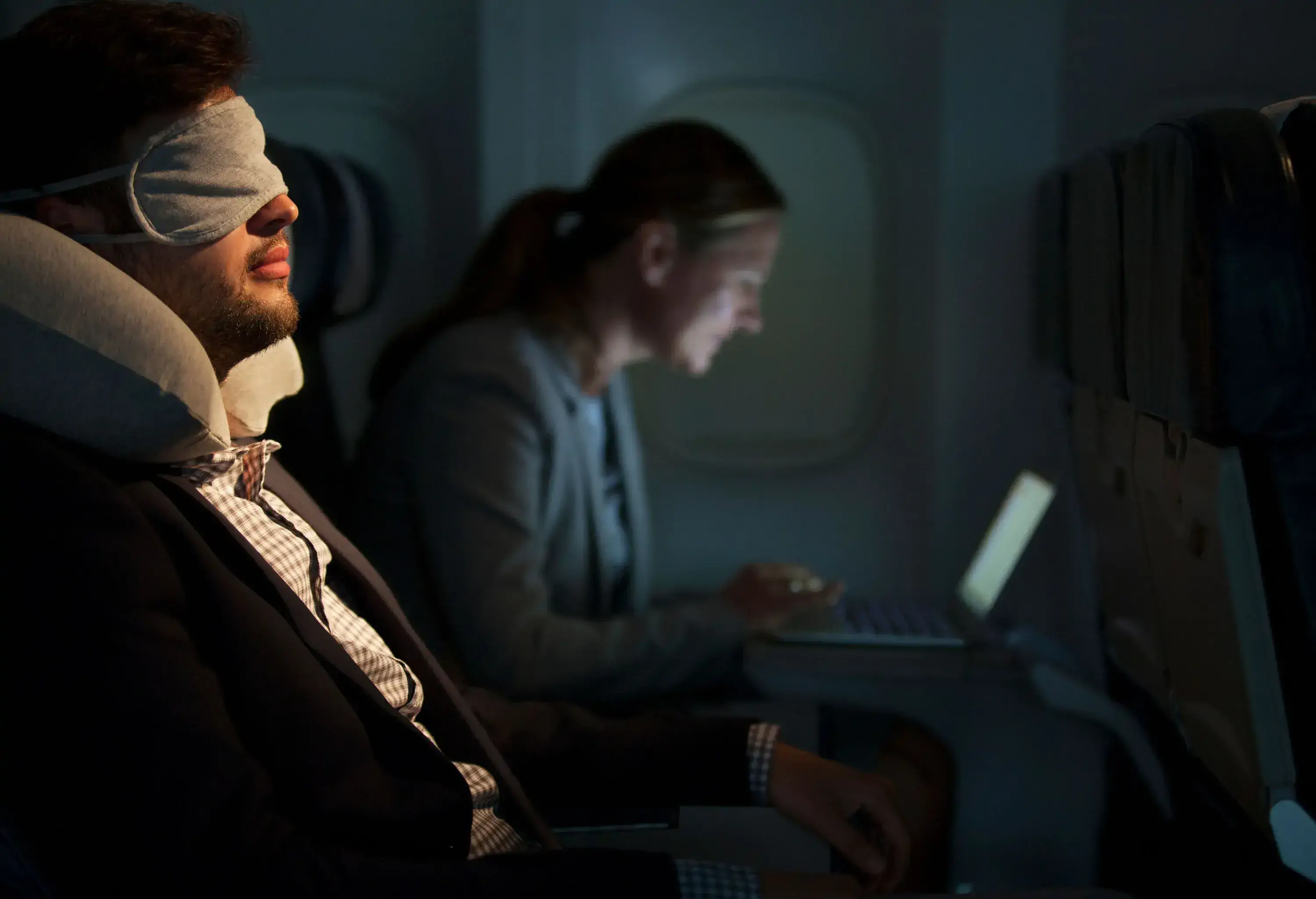
On wide-body planes, the economy seats with the most room are the bulkhead seats in the front of the cabin or the exit rows. If you’re tall, this is your best bet.
But keep in mind that the bulkhead wall is where the airlines put bassinets, so if you’re bothered by crying babies, this may not be for you. Also note that your seat’s TV will likely be stored in your armrest and that can feel awkward to some travelers. The catch-22 is that the farther up in front you sit, the quieter the actual airplane noise is since most plane engines are located under the wings.
If you don’t need the extra legroom, consider booking a seat toward the back. Most people don’t love the back row, which can be good news if your flight isn’t full. But try for a few rows up from the bathrooms.
6. Time your naps and preempt jet lag.
If you’re going through several time zones, your body will take a hit. You can prepare for a trip by adjusting your sleep in advance by a bit or booking a flight that arrives during the day.
For those who can sleep on a plane, booking a redeye is a fine decision. The faster you’re able to adjust to your destination time zone, the better rested you’ll feel overall.
7. Use noise-canceling headphones (or earplugs).
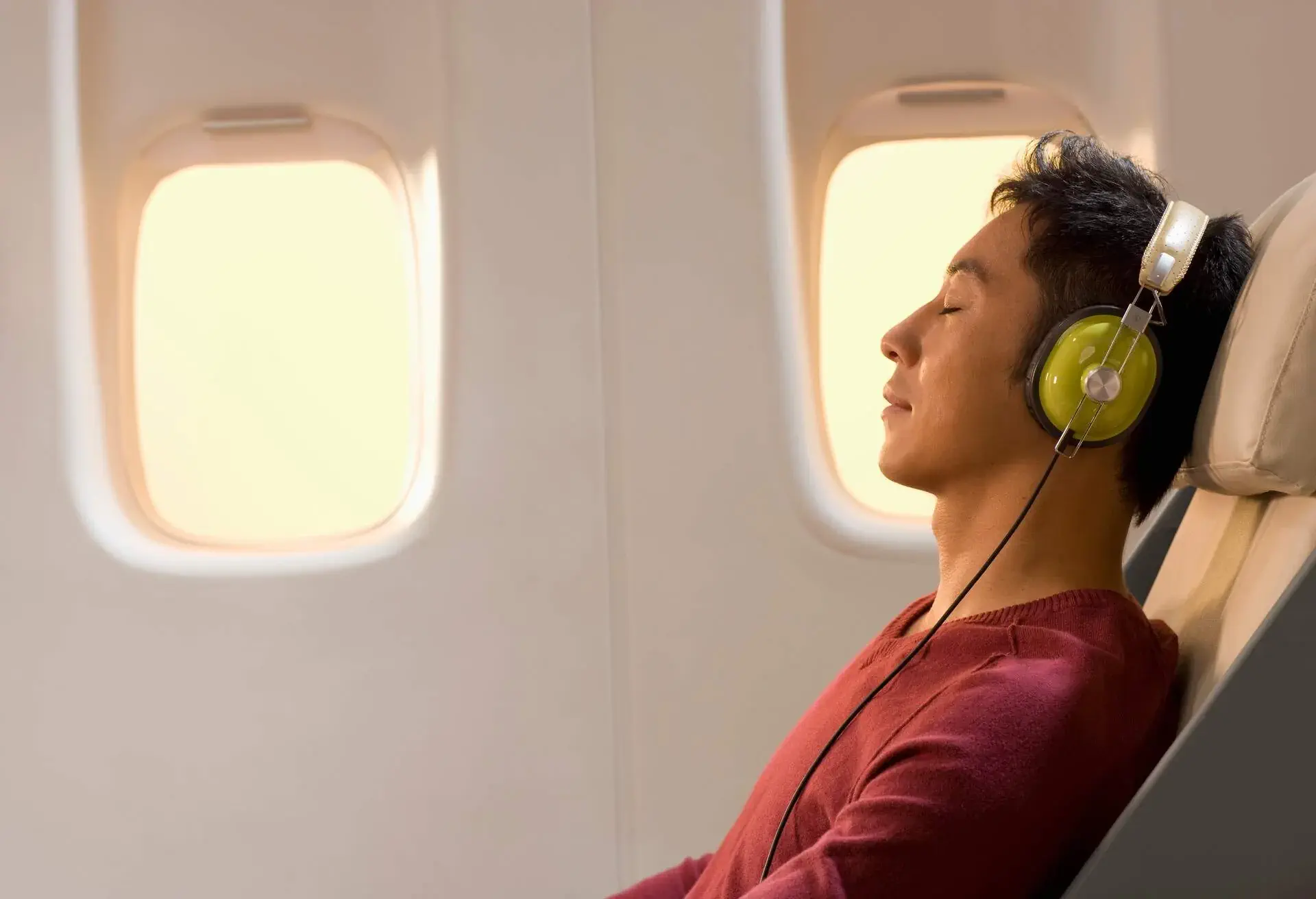
On a long flight, I bring large, noise-canceling headphones, and it’s not for the terrific audio quality.
For some reason, the chattiest passengers usually find their way to me. On a flight years ago, I learned that if I immediately put my giant headphones on when I sat down in my seat, my fellow passengers would think I was very busy — even if the headphones weren’t attached to a device. No confrontation is needed.
Bringing noise-canceling headphones or ear plugs also makes a massive difference when it comes to crying babies, chronic coughers, or other irritating distractions common on crowded flights. They’ll also make it much easier to sleep.
8. Move every 90 minutes.
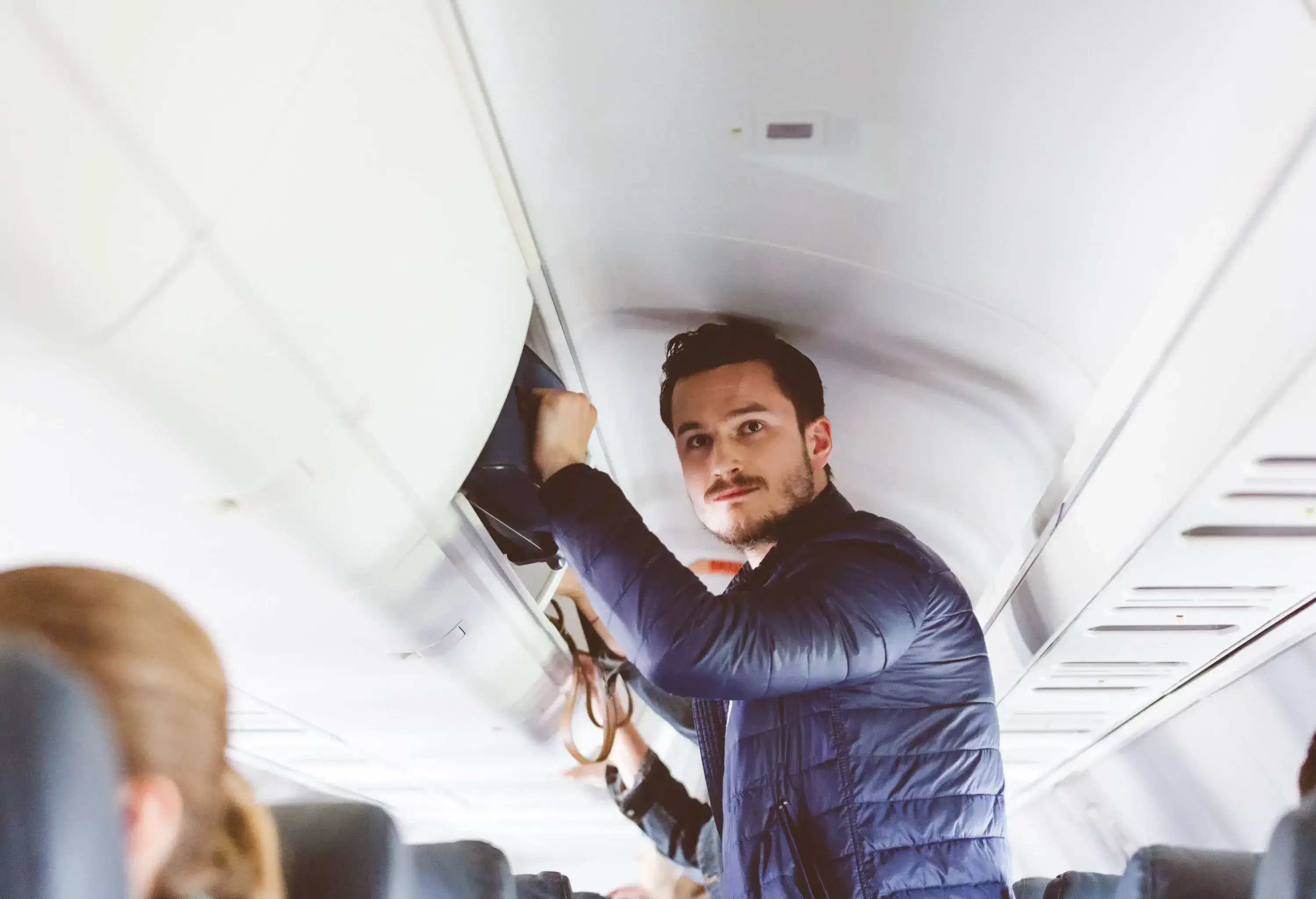
Sitting for long periods of time, dehydration, preexisting health conditions, cramped seating, and high altitudes aren’t the best for circulation.
Get up every 90 minutes or so to walk the aisles, do ankle rolls, and stretch. As mentioned previously, consider compression socks if you are particularly concerned about your circulation or feet swelling.
Moving around is also just a generally good idea to pre-empt the aches and pains associated with sitting for a long time. Develop a little circuit of exercises or stretches to do on the plane.
9. Keep a charge.
If you’re bringing electronics on a long-haul flight, you’ll want to make sure they stay charged.
Most US carriers provide outlets and USB ports in premium cabins, and some larger planes have them in economy (or the first few rows of economy plus seats).
Still, it’s always a good idea to bring a portable charger for small devices just to be on the safe side.
Turning down the brightness and closing apps can also make your battery last longer.
10. Use KAYAK tools.
As noted throughout this post, make the most of KAYAK filters to find Wi-Fi flights or redeyes if you’re a good sleeper. On the left side of your screen, click on “Flight quality,” and in the drop-down, click on “Show Wi-Fi flights only.”
Popular long-haul destinations on KAYAK.
Long flights FAQs
- Don’t drink alcohol or caffeine!
- Don’t sacrifice comfort for fashion (I’m looking at you, stiletto heels and miniskirts).
- Don’t forget to moisturize and drink plenty of water.
- Bring plenty of reading material, lots of work I need to do (or have been procrastinating), and download media for offline use.
- Bring a trusty scarf or blanket, large headphones or ear plugs.
- Bring a good portable charger.
- Pack some healthy snacks and buy a water bottle or two before boarding.

